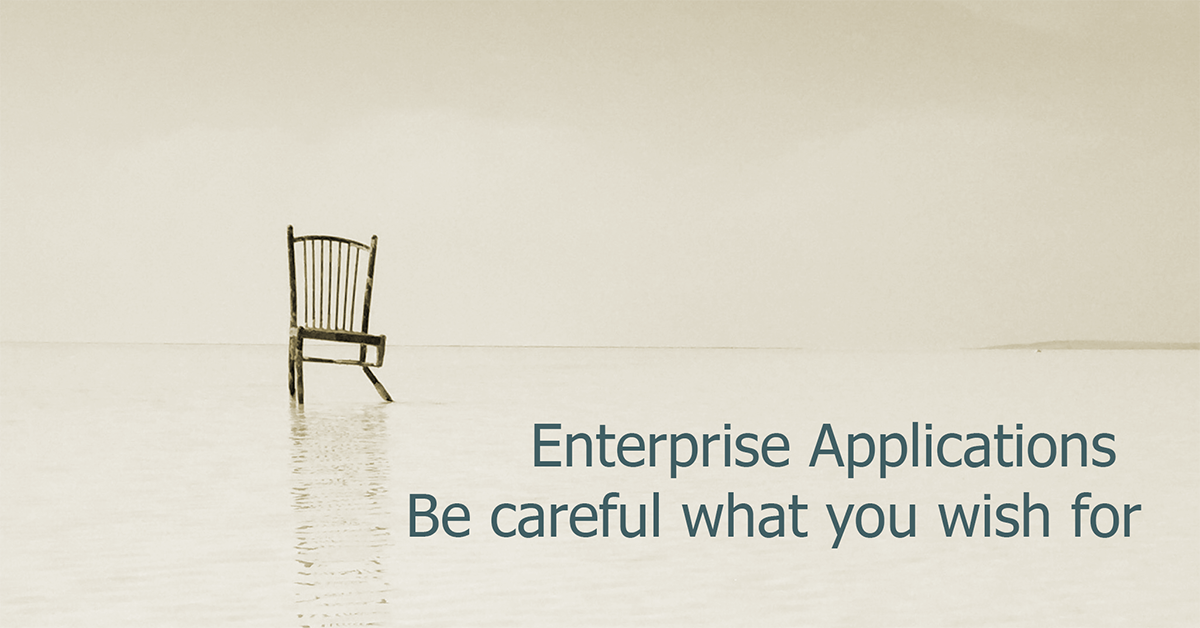
12 Apr 2022 Enterprise software – be careful what you wish for
What have a house, a boat, a chair and enterprise software got in common?
I have a friend who became very wealthy and he decided to build a house. He made his money from buying and selling property so he was hardly naïve about building but despite his expert knowledge he chose to ignore the advice of architects, electricians and plumbers and chose to design the house himself. He built it on a grand scale. The island in his kitchen for example is bigger than my kitchen. Everything about his house is huge – but most of it doesn’t work. It’s quirky in an impractical way. The electrics, plumbing, heating and security systems have never worked properly and there is an army of tradesmen constantly tinkering to get it finished. In an attempt to put a personal stamp on the design and build (and to save money here and there too) the project has cost 50% more than it should have and it isn’t finished 3 years after he moved in.
He isn’t the first and he won’t be the last to make the mistake of prioritising personal pride over established best practice.
My second favourite example of this comes from Sweden. I was chatting very recently to a colleague in Sweden who asked me about a Swedish cultural icon. “You’re old enough to remember Abba aren’t you?” “Abba” I said, “I’m old enough to remember the Wasa”. What I meant of course was the discovery of the Wasa, a heavily over-specified warship that sank without trace and was rediscovered many years later and installed in a dedicated museum in Stockholm – (a bit like Abba).
Joking aside, the Wasa museum in Stockholm is a great attraction. It was built in the 17th century commissioned by the King of Sweden Gustavus Adolphus as part of an ambitious military expansion. Despite her apparent instability, the launch was rushed and the vessel sank in full view of the crowds that had come out to see her maiden voyage. It is said that she was in some respects a vanity project for the king who insisted on many late changes to the design but I’m not sure that this is strictly historically accurate. Nevertheless, it is often held up as an example of disaster that could have been avoided if established practices had been followed.
The comparison with enterprise software is obvious. I have evangelised cloud solutions for many years and whether it’s Ariba, Coupa or any other cloud solution, they are built from established best practice – “best practice out of the box”. You can take it as it comes or you can customise it indefinitely but the more you change it, the more it will diverge from best practice and you run the risk that it will be so complex that it will become costly to implement, never be finished or it will sink on its maiden voyage.
Finally, my favourite example is about a chair. Referring to some cloud software, a client explained that they wished they had kept it simple and implemented it out of the box. “If you need a chair, you buy a chair” she said. “We needed a chair and we decided to design it from the ground up. The moment we sat on it we fell flat on our arse”.
It’s a great metaphor for cloud software. But clearly, enterprise software is more complex than a chair. To implement P2P alone, a business needs to answer hundreds of questions with literally tens of thousands of possible responses. Best practice isn’t a single set of the correct answers – just as there isn’t a single shape for a house or a single design for a boat.
If there are two recommendations I would make at the start of any enterprise software implementation it would be these: 1. Keep it simple and 2. take the advice of your expert implementation team. Design it yourself and make it complicated, you’ll likely fall flat on your arse.

